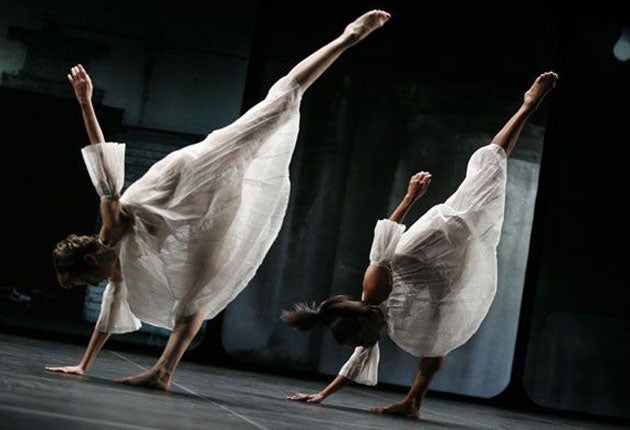Trisha Brown Dance Company, Queen Elizabeth Hall, London

Your support helps us to tell the story
From reproductive rights to climate change to Big Tech, The Independent is on the ground when the story is developing. Whether it's investigating the financials of Elon Musk's pro-Trump PAC or producing our latest documentary, 'The A Word', which shines a light on the American women fighting for reproductive rights, we know how important it is to parse out the facts from the messaging.
At such a critical moment in US history, we need reporters on the ground. Your donation allows us to keep sending journalists to speak to both sides of the story.
The Independent is trusted by Americans across the entire political spectrum. And unlike many other quality news outlets, we choose not to lock Americans out of our reporting and analysis with paywalls. We believe quality journalism should be available to everyone, paid for by those who can afford it.
Your support makes all the difference.This year's Dance Umbrella celebrated Trisha Brown, an iconic postmodernist choreographer who emerged from the art scene of downtown New York in the 1970s. At the outset of her career she gave performances in lofts, in galleries, in unexpected spaces. She rigged up dancers with ropes, so that they could walk round tree trunks or down the sides of buildings.
The Dance Umbrella celebration included film screenings, revivals of early works at Tate Modern, installations, and this repertory evening, which spanned four decades of Brown's choreography. In the foyer, in Floor of the Forest, dancers clambered through a rope sculpture threaded with clothing. The sculpture suggested a cross between a ship's rigging and laundry day. Dancers wriggled through the gaps, climbing into T-shirts or trousers, then hung there, supported by the clothes. It was an obstacle course of the everyday and the odd.
Inside the theatre, the 1990s work You Can See Us set two dancers moving through parallel steps. Dai Jian looked out at the audience, stepping precisely around the stage; Leah Morrison danced with her back to us, never turning around. Both were serene, in Brown's trademark fluid style, stepping lightly in one direction then rocking back.
Glacial Decoy, made in 1979, was Brown's first work for the proscenium stage. A series of women in gauzy nightdresses came on and danced, loping and dipping, before being replaced by the next group. A Robert Rauschenberg slideshow clicked through black-and-white images – intense close-ups of bicycles and cars, dogs and diners. Glacial Decoy looked odd on the unframed platform of the QEH, where the dancers can't vanish into the wings and have to trudge off.
L'Amour au theatre, created last year, worked better. As singers burbled about pleasure, Brown's dancers skipped with contemporary-dance solemnity.
Join our commenting forum
Join thought-provoking conversations, follow other Independent readers and see their replies
Comments